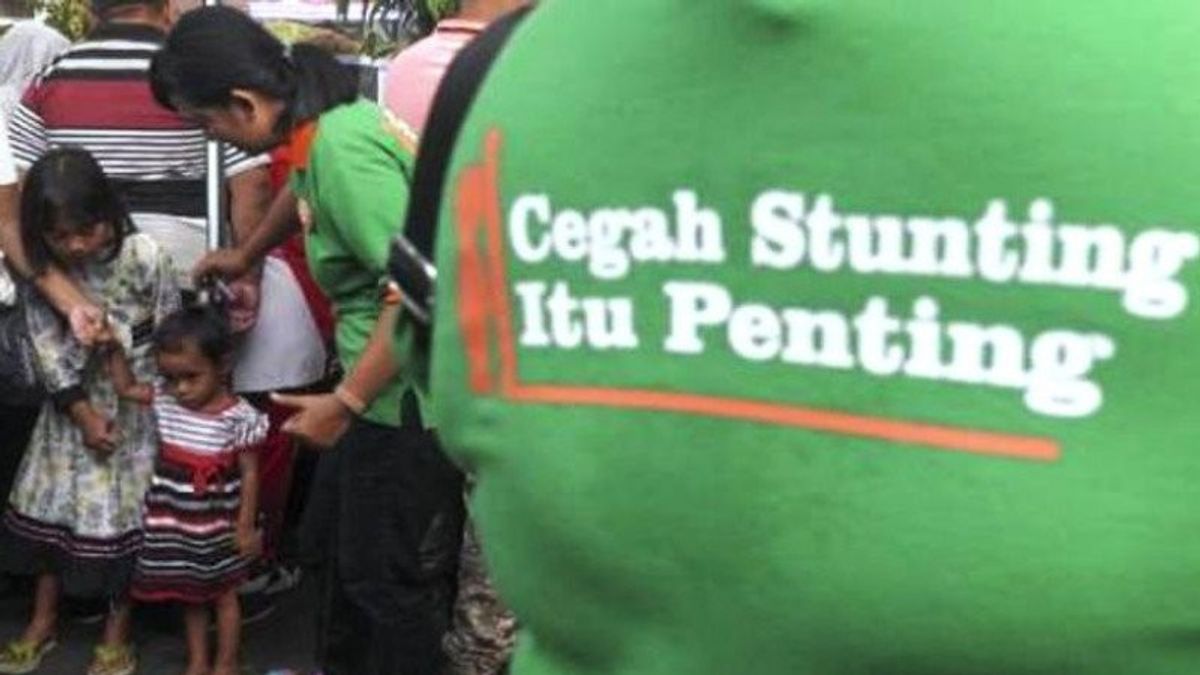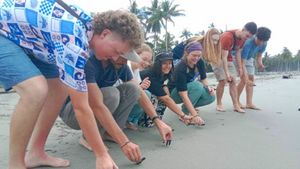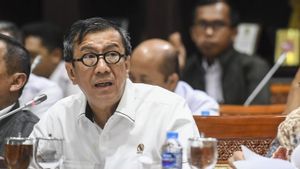JAKARTA The prevalence of stunting in Balita Indonesia, based on the results of the Indonesian Nutrition Status Study (SSGI) of the Ministry of Health, reached 24.4 percent in 2021. This means that almost 1 in 4 Toddlers are stunted. Indeed, this number decreased compared to previous years, but according to the Chairman of the Indonesian Pediatrician Association (IDAI) Piprim Basarah Yanuarso, it was not satisfactory.
"It is still far from the target of 14 percent according to the 2020-2024 National Medium-Term Development Plan (RPJMN)," he said in the IDAI Media Seminar with the theme The Role of Animal Proteins in Preventing Stunting in Indonesia online, Tuesday (24/1).
In some provinces, the prevalence of stunting in Bali, such as in Aceh, West Sulawesi, Southeast Sulawesi, South Kalimantan, East Nusa Tenggara, and West Nusa Tenggara is still above 30 percent.
This is not a trivial matter, threatening the quality of Indonesia's Human Resources (HR) in the future. Moreover, in 2045, 70 percent of Indonesia's population is of productive age ranging from 16-65 years. Are Indonesia ready to take advantage of this demographic bonus?
Stunting is a short-aged one due to chronic malnutrition in Bali. Head of the IDAI Stunting Task Force, Damayanti Rusli Sjarif, said that children with malnutrition tend to experience weight gain that is not age-appropriate, or can also experience weight loss if not handled properly.
This condition will certainly affect many things in the child's growth and development. These include decreased endurance. Children are easily infected, have difficulty eating, and experience malnutrition and malnutrition. In the end, it affects the growth hormone.
"So, when the growth hormone time decreases, the high growth also stops, if it is not overcome until it reaches what we call stunting," said Damayanti on the same occasion.
Also, inhibiting brain development. Lowering the level of child intelligence. Based on the results of research, children who experience weight gain are not age-appropriate in the first 2 months of life, 8 years later will have a lower Intellegence Quotients (IQ) rate than children with nutritional standard conditions
"The results of the research by Professor Waber also mention that children who are malnourished and malnourished at the age of the first 1 year of their life, 65 percent of children's IQ is only below 90, meaning they are only able to go to school until junior high school," said Damayanti.
However, parents don't need to be discouraged. Overcoming it can be done by providing additional nutritional therapy and playing stimulation. More importantly, continued Damayanti, "Immediately consult a pediatrician. If the problem of weight gain can be resolved early on, then we will be able to prevent stunting."
According to WHO, the ideal weight of children at the age of 1 year is:
1 month: female 3.2 kg, male 3.3 kg2 months: female 4.2 kg, male 4.5 kg3 months: female 5.1 kg, male 5.6 kg4 months: female 5.8 kg8 kg, male 6.4 kg5 month: female 6.4 kg4 kg, male 7 kg6 month: female 7.3 kg, male 7.9 kg7 month: female 7.6 kg female, male 8.3 kg8 month: female 7.9 kg8 month, male 8.6 kg9 month: female 8.2 kg9 month, male 8.9 kg10 month: female 8.9 kg10 month : female 9.5 kg10, male 9.2 kg11 month : female 9.7 kg.7 kg, male 9.4 kg12 month: female 8.9 kg, male 9.6 kg
That's the average number. Applicable standard deviation. That is, babies with a weight of less or more than 1-2 kg than the figure above, are still categorized as normal.
The ideal height for toddlers is:
1 year old boy: 72 78 centimeters old 2 years: 82 92 centimeters old 3 years: 83 95 centimeters old 4 years: 84 97 centimeters old 5 years: 8598 centimeters
1 year old daughter: 70 78 centimeters old 2 years: 80 92 centimeters old 3 years: 8295 centimeters old 4 years: 83 96 centimeters old 5 years: 8497 centimeters
Even so, not only malnutrition and malnutrition, stunting can also be caused by other factors, such as premature birth, inappropriate breastfeeding procedures, and a lot due to the inappropriate influence of breast milk companion foods because children do not get enough animal protein intake.
The function of animal protein intake in toddlers, said Piprim, is very important. In the child's body there is a growth switch called the MORC. If this switch is turned on, the bones, muscles, nerves, intestines will also grow well.
mTORC is very sensitive to essential amino acid levels. If the levels are low, the mTORC will not be active, on the other hand, if the growth switch height will turn on and trigger growth, including linear growth in body height, brain growth, colon growth, immune system, and others.
So, everything really depends on the adequacy of the essential amino acid levels in the child's body. This content is only obtained from animal protein, not plant," he said.
Animal protein comes from milk, eggs, fish, chicken, and so on. The portion must be tailored to the age of the child. For example, added Damayanti, aged 6-8 months, 70 percent of the energy source is still from breast milk, the rest from breast milk complement foods.
A minimum of 15 grams or 30 percent of the protein. Only one chicken egg or other animal protein is enough every day," he said.
When children are 9-11 months old, they can add more with half a chicken. Furthermore, the 12-24 month age of the role of breast milk begins to decrease so that animal protein intake must be increased to 20 grams per day. So, one chicken egg plus 30 grams of bloating fish, and one Ultra High Temperature (UHT) milk.
When the child is 24-60 months old, increase it again, 25 grams of protein per day so that parents can give two eggs, one chicken liver or 30 grams of red meat, two UHT milk or 30 grams of rice anchovy.
"Based on research, toddlers who consume more than one type of animal protein, for example three types in one day, the risk of stunting decreases to around 6.1 percent," he added.
The English, Chinese, Japanese, Arabic, and French versions are automatically generated by the AI. So there may still be inaccuracies in translating, please always see Indonesian as our main language. (system supported by DigitalSiber.id)









